London’s Burning was a long running LWT produced and ITV broadcasted programme that followed the lives – both professional and personal – of the crew of the London Fire Brigade’s Blue Watch. They were situated at the fictitious station of Blackwall, which was mostly played by the real Dockhead fire station. And very well played I thought. Most realistic.
The programme began life with a two hour television film which was written by the late Jack Rosenthal (he also wrote for Coronation Street, That Was The Week That Was, co-wrote the film Yentl with Barbra Streisand and was married to Maureen Lipman). This, which was inspired in part by the riots that occurred in Broadwater Farm in Tottenham, North London in the autumn of 1985, was shown on ITV in December 1986, before evolving into a series. Or actually 14 series.
The show started life as a black comedy; there was humour interwoven throughout the darker issues that were the mainstay of the goings on of the fire brigade. The initial movie moved from the often hostile reactions of the all-male crew when the first female firefighter, Josie, arrived at Blackwall through the amusement of the crew when they had to free a man who had a tender part of his anatomy caught in a curtain ring, ending up with tragedies involving a house fire and the loss of a colleague.
Later on the London’s Burning series flirted with different styles: from the serious drama of the huge emergencies (‘shouts’) that the crew dealt with to a more soap opera feel when the action moved into the home lives of the firefighters.
The first series began in February 1988; eight episodes of an hour each (including the adverts of course) which featured many different – and realistic - situations that fire crews found themselves in on a daily basis. These could range from trapped animals to car crashes, along with a large variety of things on fire. A Christmas special, ‘Ding Dong Merrily’ followed this the same year (on 25 December, funnily enough) and then the series just kept on coming.
In 1991, just before the beginning of series four, a documentary called ‘Stunts and Stars’ was screened, showing all the behind the scenes stuff that went into the making of London’s Burning.
Series four was definitely the most well-liked, with a record 18.86 viewers tuning in to the final episode: a call-out at a warehouse requiring 20 pumps, a wall falling down and the subsequent mental breakdown of an involved firefighter.
The popularity of series four meant that the shouts became bigger and bolder with each subsequent one. Huge fires, people getting trapped in fairground rides, scaffolding collapsing, vehicle crashes; you name it, Blue Watch had to rescue people from in, behind or under it, often at great personal cost to the firefighters themselves.
Despite this, viewers numbers started to go down from series six so for series nine the team behind London’s Burning concluded that they needed something really big to happen to pull the audience back in. And it was poor old Sub Officer John Hallam who provided the ‘bigness’; the same old dedicated firefighter Hallam who had the nervous collapse back in series four. During another warehouse fire (there were a lot of burning warehouses in London during this time – you’d have thought warehouse owners would have been on high alert and installed more sprinklers or something…) Hallam and Leading Firefighter Geoff Pearce were trying to bring a group of teenage girls to safety via a gantry. You can tell something bad is going to happen, just from that description, can’t you?
So yes, the gantry breaks and yes, Hallam falls to the ground. It doesn’t end well. But, on the bright side, this series won back a huge chunk of audience (peaking at 16.8 million people watching) and is considered to be the best series of the lot.
Unfortunately, this high didn’t last. Series ten suffered from budget cuts and these cutbacks meant that the shouts became less spectacular in reality and more about CGI special effects. The script also pulled away from life at the fire station and began to focus more on the personal lives of the firefighters instead, although this changed again with the following series: 11, 12 and 13 returned to normal, with the rescues, fires and dangerous situations taking centre stage again.
Are you keeping up with this? Good because by series 14 it was all change again. Criticisms of this set of episodes surrounded the show’s now soap opera type storylines – something unnecessary when Eastenders, Coronation Street and Emmerdale etc. were doing that already. The ratings plummeted and London’s Burning was taken off the air for good, with a two hour special finishing the show in August 2002. Blackwall closed its doors and the firefighters hung up their waterproof trousers.
There had been a total of 170 episodes broadcast in the show’s 14 year run and that time had seen a number of notable characters don Blue Watch’s uniform. Not many of the firefighters went by their given names but were known by nicknames, given to them by other members of the crew. Some of these were flattering: e.g. Rambo, given this name due to his muscles and gym workouts or Recall who had a photographic memory. Some were not: e.g. Poison, due to his unlikeable nature and ability to spread nasty gossip, Sicknote, who was a hypochondriac and Charisma, who had none of the stuff. Vaseline got his moniker because he managed to give many wives and girlfriends the slip, Ethnic and Zorba received theirs because they were, respectively, black and Greek. Not a massive leap of imagination used there then.
London’s Burning didn’t always get it right (see: soap opera storylines and concentrating more on the personal lives of the firefighters than the shouts) but when it did, it did it really well. The emergency call outs were everything you wanted: exciting, frightening, sad, edge of the seat stuff – often all at the same time. There were moments when the cast, stunts and special effects came together in such a way that you only realised you were holding your breath right at the end, when you saw the smoke blackened firefighters crawling their way out of the flame-ridden building with the small child safely in their arms. Our heroes!




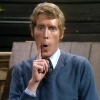



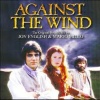
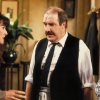
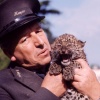
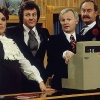
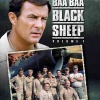

Do You Remember London's Burning?
Do You Remember London's Burning?